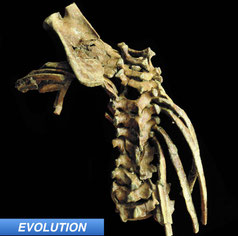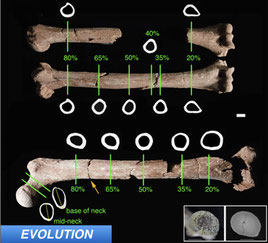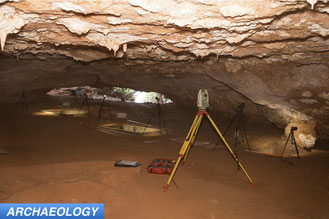
Researchers from the University of Tübingen, the Bulgarian Academy of Sciences, and the University of Toronto, Canada have published two papers in PLOS ONE in which they claim to have found the likely ancestor from which humans and great apes split. So who is our mystery ancestor? The research team has given Graecopithecus freybergi the title based on its dental root and pulp canal characteristics.
Fuss et al., authors of one of the two papers, state that molecular studies show a split between Pan (the apes) and Homo (us) occurring between five and ten million years ago. As a result, when searching for known species from which Pan and Homo could have split, Fuss et al. state that most researchers tend to lean toward three candidates: Ardipithecus kadabba, Orrorin tugenesis, and Sahelanthropus tchadensis. Each of the three species were found in Africa where most researchers think the human/ape split occurred. Fuss et al., however, in proposing Graecopithecus freybergi as the fourth, and to them most likely common ancestor from which we split, believe that divergence occurred in the Eastern Mediterranean.
The roughly seven million year old G. freybergi as an entire species is represented by one mandible found in Greece and possibly one tooth found in Bulgaria. Fuss et al. describe the mandible and tooth in great detail and provide a thorough treatise on why they think G. freybergi is the most likely common ancestor. The accompanying paper by Böhme et al. details the research team’s methodologies for dating the G. freybergi fossils and reconstructing the environment in which G. freybergi would have lived. Nonetheless, the group’s conclusion that G. freybergi is the Pan/Homo ancestor and that the Pan/Homo split would have occurred outside Africa is controversial within paleoanthropological circles to say the least.
For those interested, the Fuss et al. paper lives here: http://journals.plos.org/plosone/article?id=10.1371/journal.pone.0177127
The Böhme et al. paper is here: https://doi.org/10.1371/journal.pone.0177347.
And a Washington Post article, highlighting what some researchers see as major flaws with the Russ et al., and Böhme et al. conclusions lives here: https://www.washingtonpost.com/news/speaking-of-science/wp/2017/05/22/ape-that-lived-in-europe-7-million-years-ago-could-be-human-ancestor-controversial-study-suggests/?utm_term=.cac191a5d9aa



